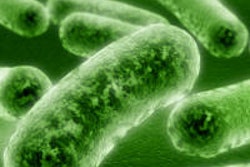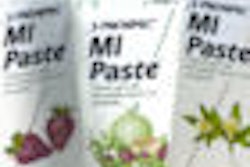Dutch researchers say they have deciphered the structure and functional mechanism of the glucansucrase enzyme that is responsible for dental plaque sticking to teeth, according to a new study published online in the Proceedings of the National Academy of Sciences (November 30, 2010). This knowledge could stimulate the identification of substances that inhibit the enzyme.
Bauke Dijkstra and Lubbert Dijkhuizen of the University of Groningen in the Netherlands analyzed glucansucrase from the lactic acid bacterium Lactobacillus reuteri, which is present in the human mouth and digestive tract. The bacteria use the glucansucrase enzyme to convert sugar from food into long, sticky sugar chains that they then use to attach themselves to tooth enamel. The main cause of caries, the bacterium Streptococcus mutans, also uses this enzyme. Once attached to tooth enamel, these bacteria ferment sugars that release acids that dissolve the calcium in teeth.
Using protein crystallography, the researchers were able to elucidate the 3D structure of the enzyme. The crystal structure revealed that the folding mechanism of the protein is unique. The various domains of the enzyme are not formed from a single, linear amino acid chain but from two parts that assemble via a U-shaped structure of the chain; this is the first report on such a folding mechanism in the literature, according to the researchers.
The unraveling of the 3D structure provided the researchers with detailed insight into the functional mechanism of the enzyme. The enzyme splits sucrose into fructose and glucose and then adds the glucose molecule to a growing sugar chain. Thus far the scientific community assumed that both processes were performed by different parts of the enzyme, according to the researchers. But their model has revealed that both activities occur in the same active site of the enzyme, they noted.
Dijkhuizen said that specific inhibitors for the glucansucrase enzyme may help to prevent attachment of the bacteria to the tooth enamel. Information about the structure and functional mechanism of the enzyme is crucial for developing such inhibitors. Thus far, such research has not been successful, he noted.
Dijkhuizen believes that in the future glucansucrase inhibitors may be added to toothpaste and mouthwash.
"But it may even be possible to add them to sweets," he said in a university press release. "An inhibitor might prevent that sugars released in the mouth cause damage."
Copyright © 2010 DrBicuspid.com



















